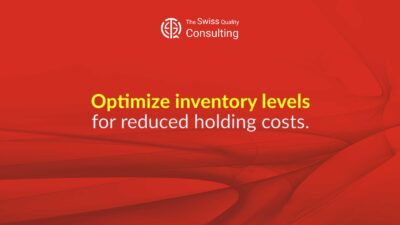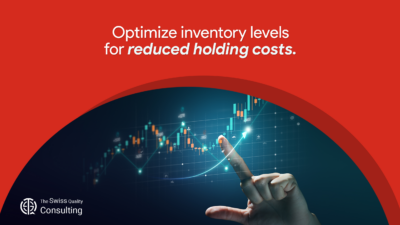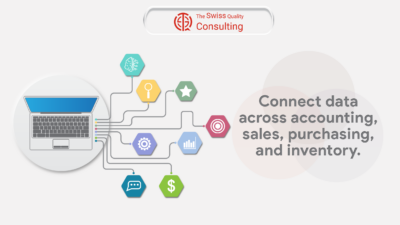Mastering the Art of Inventory Level Optimization
Introduction
In the competitive world of business, inventory level optimization is essential for reducing holding costs and enhancing operational efficiency. This article aims to provide business executives, mid-level managers, and entrepreneurs with an in-depth understanding of how optimizing inventory levels can lead to significant cost savings and improved business performance.
The Critical Importance of Inventory Management
Effective inventory management strikes a delicate balance between maintaining adequate stock to meet customer demand and minimizing the costs associated with excessive inventory. It’s a strategic dance that requires businesses to carefully orchestrate their ordering, storage, and distribution processes to ensure they have the right products at the right time, without carrying unnecessary inventory that ties up valuable resources.
Optimizing inventory levels is crucial for businesses to avoid the twin perils of overstocking and understocking. Overstocking leads to inflated carrying costs, including warehousing expenses, insurance premiums, and the potential for product obsolescence. It also ties up capital that could be better utilized for other business initiatives. Conversely, understocking results in stockouts, which can lead to lost sales, customer dissatisfaction, and a damaged reputation.
To achieve this delicate balance, businesses employ various inventory management techniques, such as demand forecasting, lead time analysis, and safety stock calculations. Demand forecasting involves predicting future customer demand, enabling businesses to anticipate stock needs and order accordingly. Lead time analysis considers the time it takes to receive inventory from suppliers, ensuring that products arrive before they are needed. Safety stock calculations account for unexpected fluctuations in demand, providing a buffer to prevent stockouts.
By optimizing inventory levels, businesses reap a multitude of benefits, including:
Reduced Costs: Minimizing excess inventory lowers carrying costs, such as storage expenses and insurance premiums, freeing up capital for other investments.
Improved Customer Satisfaction: Maintaining consistent stock levels ensures that products are available to meet customer demand, preventing stockouts and enhancing customer satisfaction.
Enhanced Efficiency: Optimized inventory levels streamline operations, reducing the time and resources spent on inventory management tasks.
Increased Profitability: By reducing costs and improving customer satisfaction, optimized inventory contributes to increased profitability and overall business success.
In essence, effective inventory management is not just about stock levels; it’s about optimizing the flow of goods throughout the supply chain. By striking the right balance between inventory availability and cost control, businesses can achieve operational efficiency, enhance customer satisfaction, and pave the way for sustainable growth and profitability.
Striking the Right Balance
The goal of inventory level optimization is to achieve the perfect balance between supply and demand. This balance is crucial for maintaining cash flow, reducing storage costs, and preventing stockouts.
Role in Change Management
Incorporating inventory level optimization strategies is an essential part of change management. As businesses evolve, so do their inventory needs. Adapting inventory strategies ensures that businesses remain responsive and agile in changing market conditions.
Adapting to Market Fluctuations
By regularly analyzing and adjusting inventory levels, businesses can respond more effectively to market fluctuations, seasonal changes, and evolving consumer trends.
Impact on Executive Coaching and Leadership
For leaders and managers, understanding and implementing inventory level optimization is a critical skill. Executive coaching services often focus on equipping leaders with the tools and knowledge to effectively manage inventory and make data-driven decisions.
Leadership and Strategic Inventory Management
Leaders are trained to understand the intricacies of inventory management and its impact on the overall health of the business. They learn to make strategic decisions that optimize inventory levels and reduce costs.
Effective Communication in Inventory Management
Clear communication is key in effective inventory management. Sharing inventory data and strategies with relevant teams ensures that everyone is aligned and working towards the same inventory optimization goals.
Enhancing Team Collaboration
Effective communication about inventory levels fosters collaboration between sales, procurement, and warehouse teams, leading to more efficient inventory management.
Generative AI in Inventory Management
Generative Artificial Intelligence (AI) is revolutionizing inventory management. AI can analyze vast amounts of data to predict future demand, optimize stock levels, and suggest proactive adjustments.
Innovative Approaches to Inventory Optimization
Generative AI provides insights that enable businesses to adopt innovative approaches to inventory management, reducing holding costs and improving overall efficiency.
Conclusion
In conclusion, inventory level optimization is vital for businesses looking to reduce holding costs and enhance operational efficiency. By adopting strategic inventory management practices, businesses can stay competitive and responsive to market demands.
#InventoryOptimization, #CostReduction, #BusinessEfficiency, #SupplyChainManagement, #AIinBusiness























